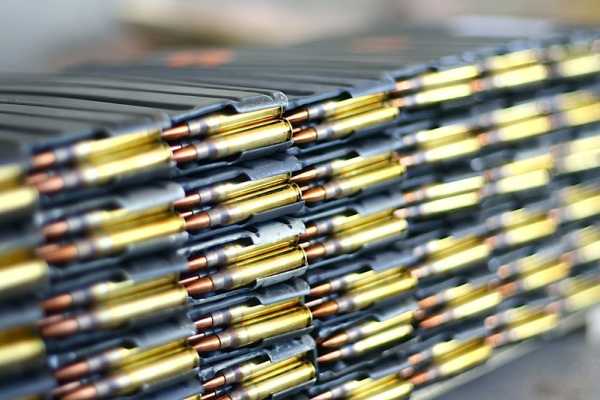
The EU's ASAP includes a bail-out type mechanism to address potential financial losses to the arms industry, should the "concern" that the Ukraine war ends become a reality (Photo: Yarden Sachs)
Last week the European Parliament voted overwhelmingly to approve the Act in Support of Ammunition Production (ASAP), the latest EU measure framed as a response to Russia’s war against Ukraine.
The act provides for faster delivery of weapons to Ukraine, the replenishment of EU member states’ arsenals and a €500m ‘Ramp-up Fund’ to incentivise European arms companies to increase production.
In reality though, the ASAP has little, if anything, to do with supporting Ukraine, and everything to do with guaranteeing the profit-driven interests of Europe’s highly-lucrative arms industry.
The European Parliament ASAP briefing reads more like a commercial risk assessment for arm company investors than a serious attempt by EU leaders to urgently address the desperate reality of the war.
The only “concern” raised in the briefing is not that the war in Ukraine continues, but perversely, that it ends, in which case “demand [for ammunition] may drop off instantly.”
EU support for the arms industry is nothing new and the “starting position” for this act dates from a 2013 European Parliament resolution aimed at strengthening Europe’s defence industry. Since then arms lobbyists have successfully positioned themselves as supposedly independent security experts, actively influencing political decisions while subsequently reaping the financial benefits.
Yet, despite the now multi-billion euro budget flowing directly from European tax payers to the arms industry, Jan Pie, secretary general of the Aerospace, Security and Defence Industries Association of Europe (ASD) expressed regret with “the limits and the sources of the financial envelope” of the ASAP.
No scrutiny, no impact assessment
Although the €500m Ramp-up Fund may pale in comparison to the more than €200bn pledged to militarism by EU member states following the outbreak of war in Ukraine, the regulation sets various dangerous precedents that erode the EU’s democratic process.
The ASAP proposal included just one sentence in its fundamental rights section on the right to life. This was followed by three paragraphs detailing how the regulation intersects with the “freedom to conduct a business” and the “right to property”.
The priorities are crystal clear — although the ASAP specifically provides for the production of lethal weapons that will undoubtedly cause loss of life, possible violations of this fundamental right did not merit further scrutiny where the “freedom to conduct a business” did.
The ASAP is peppered with business speak — optimising, expanding, modernising, upgrading — but devoid of any language about the war industry’s results: death, displacement and destruction . Moreover, breaking with standard practice, “no impact assessment was attached to the proposal because of the urgency of the matter.”
In light of the “exceptional context” the ASAP permits member states to derogate from norms on labour law, environmental standards and public contracts, encouraging them to use “defence related exemptions … to mitigate possible obstacles.”
Sign up for EUobserver’s daily newsletter
All the stories we publish, sent at 7.30 AM.
By signing up, you agree to our Terms of Use and Privacy Policy.
The ASAP is a co-financing instrument and projects funded through it will likely be supplemented with other pools of public money. Furthermore, it includes a bail-out type mechanism to address potential financial losses to the arms industry, should the “concern” that the Ukraine war ends become a reality.
Although an attempt to relax arms export criteria was eventually removed from the final draft, the ramping up of arms production across Europe and the encouragement of “cross-border partnerships” between member states, will undoubtedly lead to more EU arms ending up in the hands of authoritarian regimes or on the battlefields of war-stricken countries around the world.
By approving this regulation MEPs effectively voted themselves out of having any oversight role in how it is implemented, since the text does not provide for this.
‘Unwinnable’ can still be win-win
Similarly, because of the “emergency situation” national parliaments were denied the opportunity to scrutinise the legislation as is standard practice. Increasingly such exceptions have become the rule when it comes to boosting the EU’s war industry.
EU commissioner Thierry Breton, who oversaw the ASAP from its inception through to parliamentary approval, called on stakeholders to “think outside the box” in times of a “war economy”. This invitation for creative thinking appears only to encompass how to prolong the war and not to stop it.
Meanwhile military experts have regularly concurred that despite shipments of ever more sophisticated weaponry, the Ukraine war is unwinnable unless Nato enters into direct combat against Russia. This terrifying prospect would take us closer to nuclear warfare than any time in our recent past.
Despite peace plans being put forward by various states and endorsed by civil society, Western leaders have snubbed each and every one preferring instead to apply the logic that the answer to war is more war.
Eighteen months in to this gruelling war it is blatantly clear that we are being fed a nonsense by our political leaders. Pumping Ukraine full of weapons is not about solidarity but sabotage and the endgame is not about saving Ukraine but destroying it.
Source: euobserver.com



